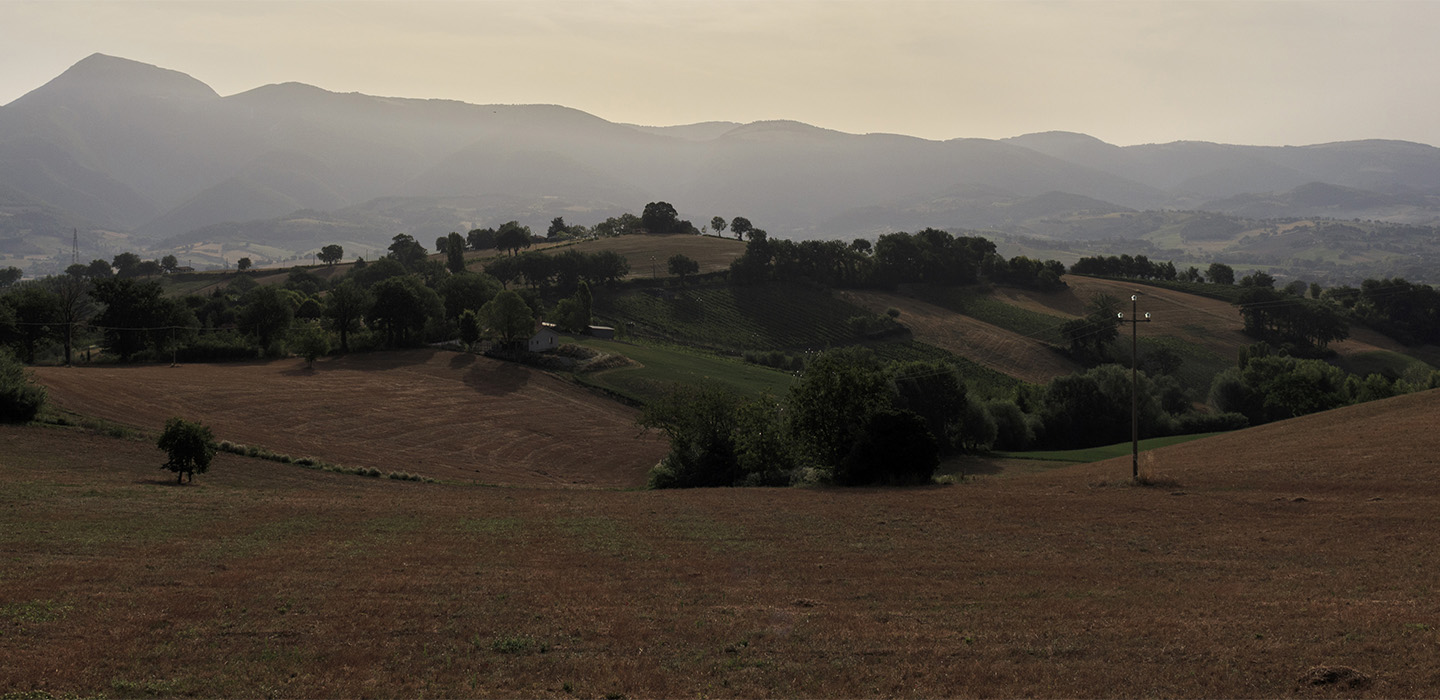During the Middle Ages, this was one of the most important and strategic fortified places in the Fabriano area. Its origins probably date back to the inhabitants of nearby Attidium who took refuge here…
The name, formerly Coldemato or Coldemati, is believed to have derived from a certain Matius, a representative of the Mattia Attidiate gens and possibly the owner of the land.
In 1199, the feudal lords Bartolo, son of Attone di Sacco, and his brother Pillaleone decided to join their possessions inside and outside the court to the emerging Municipality of Fabriano, becoming themselves and their dependent families, castellans. This was after Collamato was initially mentioned in a document from 1170.
Given the location of the place, which was an outpost and a border with the territories of the league established by the Ottoni family between the cities of Matelica-Tolentino-Montemilone-Cingoli-Recanati-Civitanova-Montegranaro, the parchment expressly refers to the concession of the use of defensive structures by the municipal army. A month later, three other families residing in Collamato made a similar act of submission.
The reaction of Matelica to the growing influence of Fabriano was to occupy Collamato with its soldiers. Finally, after several years of tension and raids, everything was resolved in 1211 when the two municipalities met to establish their mutual boundaries; in the meantime, the settlement had been rebuilt and the jurisdiction of Fabriano was recognized by both the legate of the Marche and Emperor Otto IV.
In 1349 Collamato was involved in the struggles between the different city factions. Historian Scevolini writes that to overthrow the Ghibelline Alberghetto Chiavelli, the cousin and leader of the Guelph faction, Amoroso Chiavelli occupied the settlement. Such was the opponent’s reaction, who was also engaged in another rebellion in Porcarella, that the castle was recaptured in just two days with the use of 300 armed men and razed to the ground ‘with a great killing of the inhabitants’.
In 1390, Guido Chiavelli acquired a piece of land ‘in podio in quo olim fuit castrum Collisamati’ (in English: ‘on a hill where there once was the castle of Collisamati’) indicating that the reconstruction had not yet taken place and likely did not occur until 1421 when, as established in the Chiavellesco Statute, the castrum was equipped with three large defensive towers 10 feet high that exceeded the reconstructed walls by 3 feet.
By 1486, there were 34 family units, corresponding to about 235 inhabitants. In the 16th century, together with Cerreto, Collamato was one of the wealthiest castles in the countryside, and for public use, it had a mill, an oven, a butcher’s shop, and a bakery, and it was during this period that the second village was built.
In 1570, the community house was built, and in 1604, the facade of the parish church was restored. In 1619, the internal squares and streets were paved.
Towards the end of the 17th century, two of the three towers collapsed, the ‘Nagni’ tower near the church of San Giustino and the ‘Fantino’ tower, which was struck by lightning. At this time, the population numbered around 550 inhabitants.
In 1826, the main church dedicated to San Paterniano, in poor condition, was completely rebuilt from its foundations. In addition to this religious building, the 12th-century church of San Giustino is also worth mentioning, located just outside the walls, which was used first as a hospital and later as a cemetery chapel until 1887. Another notable church is the rural church of Sant’Anna, located about 2 km from the village, where a 1481 fresco of the school of Fabriano depicting Sant’Anna, the Virgin Mary and the child Jesus with Saint Rocco and Saint Sebastian is still preserved.
A final note should be made about the two engravings found on the wooden door of the castle. Some have interpreted one of them as an inscription of Templar origin. Three letters would make up a monogram which, when read in full, would give the wording Ordo Militiae Templi. However, this theory seems to lack valid evidence: in fact, similar symbols were used by merchants to mark goods and merchandise, and were displayed or engraved outside their shops to identify the owner.
From 1839 until the unification of Italy, Collamato held the title of ‘appodiato’ municipality, enjoying a separate administration of community income and expenses.
Today, it is one of the leading villages of the vast municipality of Fabriano.
